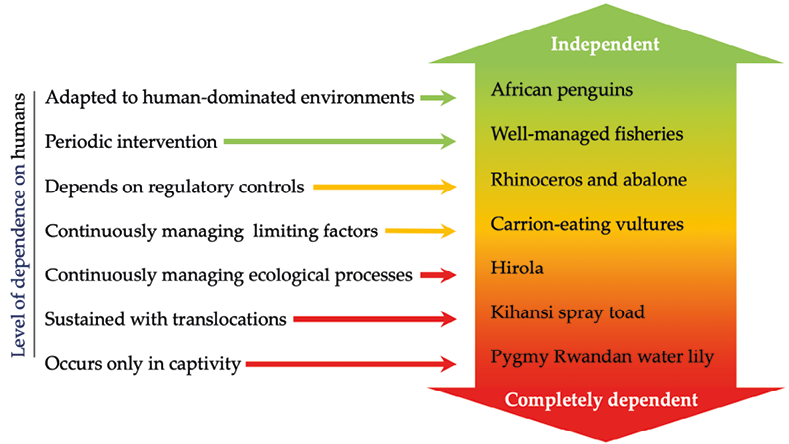15.1: Introduction to Preventing Extinctions
- Page ID
- 71531

There are many examples in this textbook illustrating how species have been saved from the brink of extinction. For some, the solution was simple: halt the threats that caused their populations to decline. In other cases, more drastic steps were required, like moving the last remaining individuals into captivity until the threats have been reversed. Many species that persist with low population sizes would likely not have survived without human intervention (Figure 15.1).

In each of these success stories, the most important first steps involved determining the ecological needs of the species at risk and understanding the factors that made that species vulnerable to extinction. This chapter reviews some of the most important concepts for understanding and managing those needs and risks. The concepts reviewed in this chapter include methods to study species and populations, actions that can be taken to increase population sizes, and strategies that can help maintain evolutionary processes such as genetic exchange. This chapter also considers how to manage for climate change and discuss the importance of ex situ conservation strategies.

